Links to external sources may no longer work as intended. The content may not represent the latest thinking in this area or the Society’s current position on the topic.
The new bacteriology
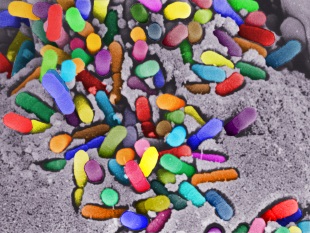
Scientific discussion meeting organised by Professor Stephen Busby FRS, Professor Pascale Cossart ForMemRS and Professor David Holden FRS.
The meeting will highlight recent advances in our understanding of bacteria, focussing on issues of societal interest such as infection, antimicrobial therapies, and the importance of bacteria in the environment. The past decade has seen the use of cutting-edge methodologies, such as imaging, high throughput sequencing, and sophisticated chemistries, leading to quantum leaps in our understanding, that we are seeking to capture in this Symposium.
This meeting was held in association with the Institut De France Académie des sciences and the German National Academy of Science Leopoldina.
Recorded audio of the presentations can be found below, and the related papers can be found online at Philosophical Transactions of the Royal Society B.
Attending this event
This event is intended for researchers in relevant fields and is free to attend. There are a limited number of places available and registration is essential. An optional lunch is offered and should be booked during registration (all major credit cards accepted).
Enquiries: Contact the events team
Organisers
Schedule
Chair
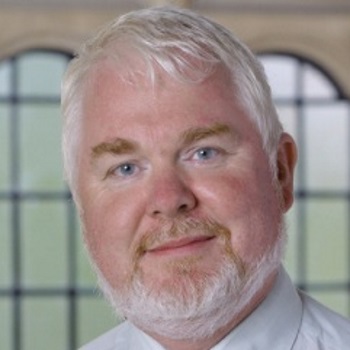
Professor Stephen Busby FRS, University of Birmingham, UK

Professor Stephen Busby FRS, University of Birmingham, UK
Research in Steve Busby’s lab is concerned with understanding the molecular mechanisms that control gene expression in bacteria, with particular attention to studying the regulation of transcription initiation in Escherichia coli.
| 09:05 - 09:30 |
Bacteria:the first 2 billion years
The conventional fossil record of bones, shells, tracks and trails traces an evolutionary history of animals some 600 million years in duration. Phylogenies, however, indicate that animals are evolutionary late-comers, implying a deeper, largely microbial history of life. Geochronology, in turn, demonstrates the conventional fossil record documents only the last 15 percent of recorded earth history. Microfossils, stromatolites, preserved lipids, and biologically informative isotopic ratios quadruple the known history of life, providing a substantial record of bacterial diversity and biogeochemical cycles in Proterozoic (2500-541 Ma) oceans that can be interpreted, at least broadly, in terms present day organisms and processes. Archean (>2500 Ma) sedimentary rocks add an additional billion years to this account, but phylogenetic and functional details are limited. Geochemistry provides a major constraint on early evolution, indicating that early bacteria were shaped by anoxic environments, with distinct patterns of major and micro-nutrient availability different. The Archean biosphere may document Earth’s first iron age, as reduced Fe was the principal electron donor for photosynthesis, oxidized Fe the most abundant terminal electron acceptor for respiration and Fe a key cofactor in proteins. With the permanent oxygenation of the atmosphere and surface ocean ca. 2400 Ma, photic zone O2 limited the access of photosynthetic bacteria to electron donors other than water, while expanding the inventory of oxidants available for respiration and chemoautotrophy. Thus, nearly halfway through Earth history, the microbial underpinnings of functioning ecosystems began to resemble their present form. 
Professor Andrew Knoll, Harvard University, USA

Professor Andrew Knoll, Harvard University, USAAndrew Knoll received his PhD from Harvard University in 1977. Following five years on the faculty of Oberlin College, he returned to Harvard where he currently serves as Fisher Professor of Natural History and Professor of Earth and Planetary Sciences. Knoll’s research focuses on the early evolution of life, Earth’s environmental history, and, especially, the interconnections between the two. He also serves on the science team for NASA’s MER mission to Mars. Knoll is a member of the US National Academy of Sciences and a Foreign Member of the Royal Society. |
|
|---|---|---|
| 09:30 - 10:00 |
Cell wall deficient (L-form) bacteria: from cell biology to the origins of life
The peptidoglycan cell wall is a defining structure of the bacteria. It is the target for our best antibiotics and fragments of the wall trigger powerful innate immune responses against infection. Surprisingly, many bacteria can switch almost effortlessly into a cell wall deficient “L-form” state. These cells become completely resistant to many antibiotics and may be able to pass under the radar screen of our immune systems. Studies of L-forms have provided surprising insights into various aspects of bacterial cell physiology and biochemistry, as well as providing a model illuminating how the earliest true cells on the planet might have proliferated. Recent studies have revealed that rapid growth of L-forms, as well as accurate chromosome segregation and assembly of components of the division machinery, can occur in the absence of a cell wall, provided that the L-forms are artificially constrained into a cylindrical shape of appropriate dimensions. Key references Leaver et al., 2009, Nature 457, 849-853. Mercier et al., 2013, Cell 152, 997-1007. Errington, 2013, Open Biology 3, 120143. Mercier et al., 2014, eLife 04629. Kawai et al., 2015, Current Biology 25, 1613-1618. 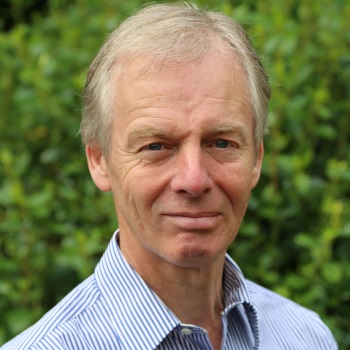
Professor Jeff Errington FMedSci FRS, Director of the Centre for Bacterial Cell Biology, Newcastle University

Professor Jeff Errington FMedSci FRS, Director of the Centre for Bacterial Cell Biology, Newcastle UniversityProf Jeff Errington FMedSci FRS is Director of the Centre for Bacterial Cell Biology; the first major research Centre focused on the molecular and cellular biology of bacterial cells. Jeff has spent his 35 year research career addressing fundamental questions about the structure and function of bacterial cells. He has made important contributions to our understanding of the molecular biology of endospore formation in Bacillus subtilis and more recently of chromosome replication and segregation, cell division and cell morphogenesis. He was a pioneer in the application of digital fluorescence imaging methods to bacteria. Jeff has also been actively involved in the exploitation of basic science, founding two antibiotic discovery spin out companies: Prolysis Ltd (now part of Biota Pharmaceuticals Inc) and Demuris Ltd, spun-out from Newcastle University. His work has been recognized through a number of awards, including: Fellowship of the Royal Society, EMBO, the UK Academy of Medical Sciences and the American Academy of Microbiology. |
|
| 10:55 - 11:25 |
What sequence gazing tells us about bacteria
Genomes represent not only the set of instructions for an organism, but also a record of how that set of instructions has evolved and adapted over short and long timescales, a record that is enhanced by the ability to compare related genomes. New technologies have allowed us to sequence very large numbers of closely-related bacterial genomes, enabling the construction of phylogenetic relationships within recently-evolved clones of human and animal pathogens. We can now see bacteria as measurably-evolving populations, amenable to analysis with Bayesian tools developed for the analysis of fast-evolving viruses. The resulting data can allow us to answer specific hypotheses, but perhaps more interestingly, these vast data sets allow us to explore without preconceptions, answering questions we didn’t know that we should be asking. Sequence gazing is hypothesis generating, and I will discuss some examples of novelty that has come from such analyses. 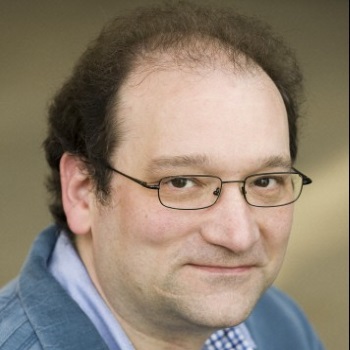
Professor Julian Parkhill FRS FMedSci, University of Cambridge, UK

Professor Julian Parkhill FRS FMedSci, University of Cambridge, UKJulian is currently a Professor in the Department of Veterinary Medicine at the University of Cambridge. His research interests are focused on the evolution of bacterial pathogens, and his group uses large-scale genomics to understand their origin and transmission, and how they adapt to selective pressures such as antibiotics and vaccines. Over the last few years his group has identified the global origin and routes of spread of many human and animal pathogens, and discovered mechanisms of resistance to antibiotics and evasion of vaccines. They are also interested in bacterial communities, and have studied the microbiota of key body sites including the lung and the gut, to uncover associations with health and disease. Before moving to Cambridge in 2019, he worked at the Wellcome Sanger Institute for 20 years. |
|
| 11:25 - 11:55 |
The transformative CRISPR-Cas9 genome engineering technology: lessons learned from bacteria
The RNA-programmable CRISPR-Cas9 system has recently emerged as a transformative technology in biological sciences, allowing rapid and efficient targeted genome engineering, chromosomal marking and gene regulation in a large variety of cells and organisms. In this system, the endonuclease Cas9 or catalytically inactive Cas9 variants are programmed with single guide RNAs (sgRNAs) to target site-specifically any DNA sequence of interest given the presence of a short sequence (Protospacer Adjacent Motif, PAM) juxtaposed to the complementary region between the sgRNA and target DNA. Originally, CRISPR-Cas is an RNA-mediated adaptive immune system that protects bacteria and archaea from invading mobile genetic elements. Short crRNA (CRISPR RNA) molecules containing unique genome-targeting spacers guide Cas protein(s) to invading cognate nucleic acids to affect their maintenance. CRISPR-Cas has been classified into three main types and further subtypes. CRISPR-Cas9 originates from the type II system that has evolved unique molecular mechanisms for maturation of crRNAs and targeting of invading DNA, which my laboratory has identified in the human pathogen Streptococcus pyogenes. During the step of crRNA biogenesis, a unique CRISPR-associated RNA, tracrRNA, base pairs with the repeats of precursor-crRNA to form anti-repeat-repeat dual-RNAs that are cleaved by RNase III in the presence of Cas9, generating mature tracrRNA and intermediate forms of crRNAs. Following a second maturation event, the mature dual-tracrRNA-crRNAs guide Cas9 to cleave cognate target DNA and thereby affect the maintenance of invading genomes. We have shown that Cas9 can be programmed with sgRNAs mimicking the natural dual-tracrRNA-crRNAs to target site-specifically any DNA sequence of interest. I will discuss the biological roles of CRISPR-Cas9, the mechanisms involved, the evolution of type II CRISPR-Cas components in bacteria and the applications of CRISPR-Cas9 as a novel genome engineering technology. 
Professor Emmanuelle Charpentier, Max Planck Institute for Infection Biology, Germany

Professor Emmanuelle Charpentier, Max Planck Institute for Infection Biology, GermanyEmmanuelle Charpentier studied biochemistry and microbiology at the University Pierre and Marie Curie, Paris, France and obtained her PhD in Microbiology for her research performed at the Pasteur Institute. She then continued her work in New York, at the Rockefeller University, New York University Langone Medical Center and the Skirball Institute of Biomolecular Medicine and at St Jude Children’s Research Hospital Memphis. Charpentier returned to Europe to establish her own research group at the Max F. Perutz Laboratories of the University of Vienna in Austria where she habilitated in Microbiology. She was then appointed Associate Professor and then Guest Professor at the Laboratory for Molecular Infection Medicine Sweden (MIMS, Nordic EMBL Partnership for Molecular Medicine) at Umeå University in Sweden where she habilitated in Medical Microbiology. Since 2013, Charpentier is Head of the Department “Regulation in Infection Biology” at the Helmholtz Centre for Infection Research, and Professor at the Medical School of Hannover in Germany. |
Chair
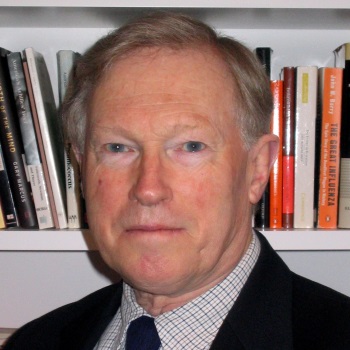
Professor Richard Moxon FRS, University of Oxford, UK

Professor Richard Moxon FRS, University of Oxford, UK
Richard Moxon MA, F.Med.Sci, FRS is Emeritus Professor of Paediatrics and a Professorial Fellow of Jesus College at the University of Oxford. His paediatric and research training was in the UK (1966-1969) and the USA (1970-1974). He was Assistant and then Associate Professor of Paediatrics at Johns Hopkins University in Baltimore (1974-1984), becoming the Eudowood Director of Pediatric Infectious Diseases in 1981 before he was elected as Action Research Professor and Chairman of Paediatrics at Oxford University (1984 - 2008) and Head of the Molecular Infectious Diseases Group in the Weatherall Institute of Molecular Medicine (1988-2008). He is a Fellow of the UK Royal College of Paediatrics and Child Health and of the UK Academy of Medical Sciences and was elected a Fellow of the Royal Society in 2007. His major research interests have been on the pathogenesis and prevention of sepsis and meningitis caused by the bacteria Haemophilus influenzae and Neisseria meningitidis.
| 13:20 - 13:50 |
Mechanisms of local signalling by the second messenger c-di- GMP in Escherichia coli
Bacterial biofilms are architecturally and morphologically highly structured multicellular communities with essentially tissue-like properties. Structure and functions of a biofilm depend on an elaborate spatiotemporal control of the synthesis of an extracellular matrix that usually contains adhesins, amyloid fibres and exopolysaccharides (e.g. cellulose) (1). In E. coli the production of amyloid curli fibres and cellulose is activated by the biofilm regulator CsgD, whose expression requires the stationary phase sigma factor RpoS and the nucleotide second messenger c-di-GMP. The latter is synthesized by 12 diguanylate cyclases (DGC, with GGDEF domains) and degraded by 13 phosphodiesterases (PDE, with EAL domains). Some of these DGCs and PDEs show specialized functions in matrix control that are based on highly specific macromolecular interactions, i.e. 'local c-di-GMP signaling'. 
Professor Regine Hengge, Humboldt Universitat, Germany

Professor Regine Hengge, Humboldt Universitat, GermanyRegine Hengge studied biology and obtained her doctorate at the Universität Konstanz. After carrying out post-doctoral research at Princeton University (NJ, USA), she completed her Habilitation in Microbiology & Molecular Genetics at the Universität Konstanz. As a Full Professor she headed the microbiology unit of the Freie Universität Berlin from 1998-2013, and since 2013 has been in a similar position at the Humboldt-Universität zu Berlin. Her scientific research deals with signal transduction mechanisms and regulatory networks in bacterial biofilm formation and stress responses. Following her interest in novel approaches in science communication she also pursues a longterm Science&Theatre project in collaboration with the English Theatre Berlin. She received numerous scientific awards, among them the Gottfried Wilhelm Leibniz Prize from the DFG (1998), the Landesforschungspreis Baden-Württemberg (1996) and an ERC Advanced Investigator Grant (2009). She is an elected member of the Berlin-Brandenburg Academy of Sciences, the Deutsche Akademie der Naturforscher Leopoldina, the European Organisation for Molecular Biology (EMBO), the European Academy of Microbiology and the American Academy of Microbiology. |
|
|---|---|---|
| 13:50 - 14:20 |
Using images to understand structure, function and dynamics of Type VI secretion systems
The bacterial Type VI secretion system (T6SS) is a large dynamic organelle that is functionally analogous to contractile tails of bacteriophages. T6SS is used by Gram-negative bacteria to inhibit adjacent cells via translocation of toxic effector proteins and thus plays an important role in bacterial pathogenesis and ecology. Time-lapse fluorescence light microscopy revealed that T6SS sheath, which powers the secretion, cycles between assembly, quick contraction, disassembly and re-assembly. Single cell analysis of subcellular localization of T6SS assembly revealed that T6SS organelle encoded by Pseudomonas aeruginosa H1-T6SS cluster is assembled and aimed to specifically retaliate against attack by other bacteria. I will present latest update on the structure, function and dynamics of T6SS as well on mechanisms of effector delivery and function in various T6SS+ organisms. I will also focus on the structure of the T6SS sheath solved by cryo-electron microscopy and the implications for T6SS dynamics and assembly. I will show examples of how various imaging techniques helped us to understand many aspects of T6SS. 
Professor Marek Basler, University of Basel Biozentrum, Switzerland

Professor Marek Basler, University of Basel Biozentrum, SwitzerlandFrom 2007 to 2013, Marek Basler was a post-doctoral researcher with Prof. John Mekalanos at Harvard Medical School in the USA. In 2013, Marek became a group leader at the Biozentrum of University of Basel, Switzerland. He uses structural biology, live cell fluorescence microscopy, biochemistry and genetics to understand the structure and function of the bacterial Type VI Secretion System. He further studies molecular mechanisms of cell-cell interactions in various model organisms such as P. aeruginosa, V. cholerae, and E. coli. |
|
| 15:35 - 16:05 |
From homeostasis to pathology: decrypting microbe-host symbiotic signals in the intestinal crypt
Our immune system has likely evolved under the double constraint to tolerate the commensal microbiota, particularly in the gut, where bacteria can reach astronomic numbers, and to quickly recognize and eliminate the few pathogenic bacteria that reach and colonize this same surface. The cross talks that allow the host to discriminate between the « good » microbes and the « bad » microbes are starting to be fully recognized. We have focused on the intestinal crypt that accounts for epithelial regeneration, due to the presence of stem cells, their environmental niche and the transit amplifying epithelial compartment. We have identified a « Crypt-specific core microbiota (CSCM) » corresponding to a limited group of strictly aerobic bacteria that populate the cecal and colonic crypts of mammals. We can now decipher the molecular crosstalks between CSCM members and the crypt regenerative apparatus. For instance we have shown that, thanks to activation of a Nod-2 dependent signaling process by muramyl dipeptide from the microbiota, stem cells under stress express increased surviving capacities, thus securing better epithelial restitution. This illustrates the depth of our symbiosis with gut commensals and illuminates the function of Nod-2 beyond innate immune regulation. Alternatively, we have identified the intestinal crypt as the site of invasion by Shigella, a bona fide enteric pathogen. We are currently deciphiring the cross-talks occuring in these various situations. 
Professor Philippe Sansonetti ForMemRS, Institut Pasteur, France

Professor Philippe Sansonetti ForMemRS, Institut Pasteur, FranceSansonetti has pioneered the study of molecular pathogenesis of bacterial infections and cellular microbiology, based on his discovery of the mechanism of cell invasion by Shigella. He has led the field practically and conceptually, by discovering key processes relevant to many pathogens and demonstrating the way in which bacteria subvert eukaryotic cells for their growth. These include actin-dependent entry, cell-to-cell spread, pro-inflammatory apoptosis, intracellular sensing of bacteria, regulation of host responses by post-translational modifications, repression of innate immunity genes, and blocking of T-cell migration. Collectively his work has provided the most complete and unified view of a bacterial-controlled disease process. |
|
| 16:05 - 16:35 |
Microbiota-Genetic-Environment interplay in intestinal inflammation
The intestinal tract is inhabited by a large and diverse community of microbes collectively referred to as the gut microbiota. While the gut microbiota provides important benefits to its host, disturbance of the microbiota–host relationship is associated with numerous chronic inflammatory diseases, including inflammatory bowel disease and metabolic syndrome. A primary means by which the intestine is protected from its microbiota is via multi-layered mucus structures that cover the intestinal surface, allowing the vast majority of gut bacteria to be kept at a safe distance from epithelial cells that line the intestine. Thus, agents that disrupt mucus–bacterial interactions might have the potential to promote diseases associated with gut inflammation. We recently reported that, in mice, relatively low concentrations of two commonly used emulsifiers, detergent-like molecules and ubiquitous component of processed foods, induced low-grade inflammation and obesity/metabolic syndrome in wild-type hosts and promoted robust colitis in mice predisposed to this disorder. Emulsifier-induced metabolic syndrome was associated with microbiota encroachment, altered species composition and increased pro-inflammatory potential. Use of germ-free mice and faecal transplants indicated that such changes in microbiota were necessary and sufficient for both low-grade inflammation and metabolic syndrome. These results support the emerging concept that perturbed host–microbiota interactions resulting in low-grade inflammation can promote adiposity and its associated metabolic effects. Moreover, they suggest that the broad use of emulsifying agents might be contributing to an increased societal incidence of obesity/metabolic syndrome and other chronic inflammatory diseases. 
Dr Benoit Chassaing, Institute for Biomedical Sciences, Georgia State University, USA.

Dr Benoit Chassaing, Institute for Biomedical Sciences, Georgia State University, USA.Dr Benoit Chassaing obtained his PhD in microbiology at the University of Clermont-Ferrand (France), identifying factors involved in the virulence of adherent and invasive Escherichia coli strains (pathovar involved in the etiology of Crohn's disease). Since his PhD defense in 2011, he has been working at Georgia State University (Atlanta) with Dr Andrew T. Gewirtz on various subjects related to mucosal immunology, trying to decipher how genetic and environmental factors can perturb intestinal microbiota composition in a detrimental way, leading to intestinal inflammation. |
Chair
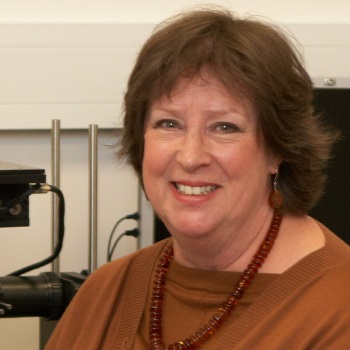
Professor Judith Armitage FRS, University of Oxford, UK

Professor Judith Armitage FRS, University of Oxford, UK
Judy Armitage gained her BSc and PhD in Microbiology from University College London. After a period as a Lister Institute Research Fellow she was appointed a University Lecturer in Biochemistry at the University of Oxford. She became a Full Professor in 1996 and is a Professorial Fellow in Biochemistry at Merton College Oxford. She is a Member of EMBO, the American Academy of Microbiology and the Royal Society. She has spent her research career investigating bacterial behaviour, in particular how bacteria swim and how they control that swimming to reach an optimum environment for growth (chemotaxis). She uses interdisciplinary approaches to address these questions, including quantitative imaging of fluorescent proteins in living cells, combined with biophysics, molecular genetics, biochemistry and mathematical modelling.
| 09:00 - 09:30 |
Structural insights into ribosome-dependent activation of stringent control
In order to survive, bacteria continually sense, and respond to, environmental fluctuations. Stringent control represents a key bacterial stress response to nutrient starvation that leads to a rapid and comprehensive reprogramming of metabolic and transcriptional patterns. In general, transcription of genes for growth and proliferation are down-regulated, while those important for survival and virulence are favored. Starvation is sensed as depletion of one, or more, of the aminoacyl-tRNA pools results in accumulation of ribosomes stalled with non-aminoacylated (uncharged) tRNA in the ribosomal A site. RelA is recruited to stalled ribosomes, and activated to synthesize a hyperphosphorylated guanosine analog, (p)ppGpp, which acts as a pleiotropic second messenger. However, structural information for how RelA recognizes stalled ribosomes, its mechanism of activation, and how aminoacylated tRNAs are discriminated against, is missing. Here, we present the electron cryo-microscopy (cryo-EM) structure of RelA bound to the bacterial ribosome stalled with uncharged tRNA at 3 Å resolution. The structure reveals that RelA utilizes a distinct binding site compared to the translational factors, with a multi-domain architecture that wraps around a highly distorted A-site tRNA. The TGS domain of RelA binds the CCA tail to orient the free 3’ hydroxyl group of the terminal adenosine towards a beta-strand, such that an aminoacylated tRNA at this position would be sterically precluded. The structure supports a model where association of RelA with the ribosome suppresses auto-inhibition to activate synthesis of (p)ppGpp and initiate the stringent response. Since stringent control is responsible for the survival of pathogenic bacteria under stress conditions, and contributes to chronic infections and antibiotic tolerance, RelA represents a good target for the development of novel antibacterial therapeutics. 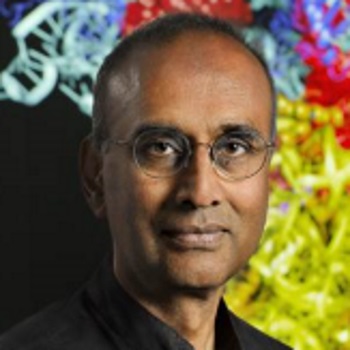
Venki Ramakrishnan, President, The Royal Society

Venki Ramakrishnan, President, The Royal SocietyVenki Ramakrishnan has a long-standing interest in ribosome structure and function. In 2000, his laboratory determined the atomic structure of the 30S ribosomal subunit and its complexes with ligands and antibiotics. This work has led to insights into how the ribosome “reads” the genetic code, as well as into various aspects of antibiotic function. In the last few years, Ramakrishan’s lab has determined the high-resolution structures of functional complexes of the entire ribosome at various stages along the translational pathway, which has led to insights into its role in protein synthesis during decoding, peptidyl transfer, translocation and termination. More recently his laboratory has been applying cryoelectron microscopy to study eukaryotic and mitochondrial translation. Since 1999, he has been on the scientific staff of the MRC Laboratory of Molecular Biology in Cambridge and he is currently President of the Royal Society. |
|
|---|---|---|
| 09:30 - 10:00 |
In vivo remodelling of the bacterial flagellar motor and related protein complexes
It is now clear that bacteria are not bags of diffusing chemicals, dividing in the middle to produce 2 daughter cells, but highly organised organisms. Using live cell imaging, molecular genetics and biophysics we have been following the exchange of proteins in response to the local environment in functioning nanomachines.. We have shown that both the bacterial flagellar motor and injectisome undergo remodelling in response to changes in their environment. Our recent data will be discussed, along with new methods for following in vivo protein dynamics over extended periods. 
Professor Judith Armitage FRS, University of Oxford, UK

Professor Judith Armitage FRS, University of Oxford, UKJudy Armitage gained her BSc and PhD in Microbiology from University College London. After a period as a Lister Institute Research Fellow she was appointed a University Lecturer in Biochemistry at the University of Oxford. She became a Full Professor in 1996 and is a Professorial Fellow in Biochemistry at Merton College Oxford. She is a Member of EMBO, the American Academy of Microbiology and the Royal Society. She has spent her research career investigating bacterial behaviour, in particular how bacteria swim and how they control that swimming to reach an optimum environment for growth (chemotaxis). She uses interdisciplinary approaches to address these questions, including quantitative imaging of fluorescent proteins in living cells, combined with biophysics, molecular genetics, biochemistry and mathematical modelling. |
|
| 10:55 - 11:25 |
c-di-AMP targets both arms of osmoprotection – potassium and osmolyte uptake systems
Cyclic diadenosine monophosphate (c-di-AMP) is an essential second messenger in Staphylococcus aureus but it physiological function remains enigmatic. In a previous high throughput screen, four c-di-AMP binding partners were identified: a PII like protein of unknown function, a putative cation/proton antiporter, a gating component of a potassium uptake system, and a protein involved in the regulation of a second potassium transport system. The current study revealed an additional c-di-AMP binding protein, named OpuCA, a substrate-binding component of an osmoprotectant ABC uptake system. Biochemical assays showed that c-di-AMP is able to bind with high affinity and specificity to OpuCA. No other nucleotide tested could compete with c-di-AMP for binding even when added in 100-fold excess. Physiological tests indicate that the OpuC system plays a role in osmoprotection through the uptake of the compatible solute carnitine. Experiments are currently under way to determine mechanistically how c-di-AMP regulates the function of the S. aureus OpuC uptake system. The two main mechanisms, which bacteria utilize to respond to osmotic stress, are the rapid uptake of potassium and osmolytes. With the identification of OpuCA as a novel c-di-AMP binding protein, we now linked this signaling molecule to both arms of osmoprotection. This points towards c-di-AMP being a general regulator of the osmotic stress response in S. aureus. 
Professor Angelika Grundling, Imperial College London, UK

Professor Angelika Grundling, Imperial College London, UKAngelika Gründling is a Reader in Molecular Microbiology at Imperial College London. The research in her lab focuses on the investigation of fundamental processes that are essential for the growth of Gram-positive bacterial pathogens. She combines genetic, biochemical and in collaborative work structural approaches to provide mechanistic insight into cell wall synthesis and nucleotide signaling pathways in Staphylococcus aureus and Listeria monocytogenes. Angelika obtained her Ph.D. in Microbiology from the University of Vienna in 2000. She performed her postdoctoral training at the Harvard Medical School, where she investigated flagallar motility in the bacterial pathogen L. monocytogenes and at the University of Chicago, where she initiated her studies on the cell wall polymer lipoteichoic acid in S. aureus. Angelika relocated to Imperial College London in 2007 and started her independent research career. There, she continues her work on the bacterial cell wall and more recently on the essential signaling nucleotide c-di-AMP. |
|
| 11:25 - 11:55 |
Remarkable functional convergence: Type I and Type II toxin-antitoxins induce persistence by a ‘magic spot’ dependent mechanism
Using single-cell technology, we showed previously that, in E. coli, the ubiquitous bacterial stress alarmone (p)ppGpp (Magic Spot) is a central regulator of both spontaneous and environmentally induced persistence1. The (p)ppGpp level varied stochastically in a population of exponentially growing cells and the high (p)ppGpp level in the rare cells induced persistence. Persister cell formation depended on 10 type II toxin – antitoxin (TA) modules encoding RNases that inhibit translation by cleavage of mRNA or rRNA2, 3. A similar mechanism underlies persister formation by Salmonella4. 
Professor Kenn Gerdes, University of Copenhagen, Denmark

Professor Kenn Gerdes, University of Copenhagen, DenmarkKenn Gerdes is a Professor and centre leader at the Department of Biology at the University of Copenhagen. He has profound experience within the field of molecular microbiology. At present, his work is focussed on bacterial stress responses. Early on, Kenn discovered type I toxin – antitoxin (TA) modules and unravelled a complicated antisense RNA-regulated control system (hok/sok). Turning to the almost ubiquitous type II TA modules, he discovered several toxin targets and revealed how TA modules are regulated. In parallel, Kenn uncovered the first bacterial DNA segregation machinery (ParM). More recently, Kenn showed that type II TA modules are effectors of persistence (multidrug tolerance) in bacteria and that the “alarmone” (p)ppGpp induces persistence by activating TA modules. Based on the latter discoveries Kenn and his colleagues established the Centre for Bacterial Stress Response and Persistence (BASP) funded by the Danish National Research Foundation, the Novo Nordisk Foundation and the ERC. |
Chair

Professor Pascale Cossart ForMemRS, Institut Pasteur, France

Professor Pascale Cossart ForMemRS, Institut Pasteur, France
Pascale Cossart, after studying chemistry in Lille (France) obtained a master degree at Georgetown University, Washington, DC. Back in France, she obtained her PhD in Paris in the Institut Pasteur where she is still now, heading the Bacteria-Cell Interactions unit which is also an Inserm and an INRA unit. After studying DNA-protein interactions, in E. coli, she started in 1986, to study the molecular and cellular basis of infections by intracellular bacteria taking as a model the bacterial pathogen Listeria monocytogenes. Her research has led to a number of new concepts in infection biology but also in fundamental microbiology, in cell biology and more recently in epigenetics.
Pascale Cossart is considered as a pioneer in Cellular Microbiology. Her contributions have been recognized by a number of awards, including the Robert Koch Prize (2007), the Louis Jeantet Prize for Medicine (2008), the Balzan Prize (2013). She is a member of the French Academy of Science (2002), a foreign member of the American National Academy of Science (2009), of the German Leopoldina (2001), and of the Royal Society (2010).
| 13:20 - 13:50 |
Inhibiting intracellular growth of Mycobacterium tuberculosis
Tuberculosis (TB) was one of the first infectious diseases to be rationally treated and the golden age of TB drug discovery led not only to new antibiotics but also to the development of combination therapy. Until recently, no new TB drugs had been developed since the 1960s but, in response to the HIV-pandemic and widespread multidrug resistance, intensive efforts have been made to establish a pipeline of candidate TB drugs. Mycobacterium tuberculosis primarily occupies an intracellular niche in humans and this constitutes an additional barrier to drug activity. Using an innovative intracellular screen we sought new leads for drugs that kill tubercle bacilli ex vivo but not in vitro. Screening a library of FDA-approved drugs led to the identification of the proton pump inhibitor, prevacid, a widely used over-the-counter heartburn remedy, as a prodrug that is activated by the host cell to kill M. tuberculosis. In an extension of this screen, we discovered small molecule inhibitors of the ESX-1 protein secretion system with immunomodulatory activity. ESX-1 is the major virulence determinant used by the tubercle bacillus so its inactivation results in attenuation not death, an unorthodox means of disease control. 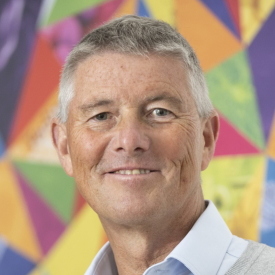
Professor Stewart Cole FRS KCMG, Institut Pasteur, France

Professor Stewart Cole FRS KCMG, Institut Pasteur, FranceStewart Cole is an internationally renowned scientist and Professor of Microbial Pathogenesis. Since 2 January 2018, he is President of the Institut Pasteur. From 2007 to 2017, he has served as Professor and Director of the Global Health Institute at the Ecole polytechnique fédérale de Lausanne, the Swiss Federal Institute of Technology (EPFL) – a world-leading education and research center. For 24 years Cole worked as a researcher and also held various research management positions at the Institut Pasteur. He was Director of Strategic Technologies and then Executive Scientific Director, contributing to several patent applications relating to HIV/AIDS, cervical cancer and multidrug-resistant tuberculosis. He participated in the Scientific Advisory Boards of the Institut Pasteur in Iran, the Institut Pasteur in Montevideo and the Institut Pasteur in Lille. Professor Cole was also acting President of the Institut Pasteur in Paris in 2005. He has been the recipient of many national and international prizes and distinctions. In 2009, he was awarded the World Health Organization’s prestigious Stop-TB Partnership Kochon Prize for his leadership and groundbreaking accomplishments in genetic research on M. tuberculosis and his contribution to novel therapeutic strategies for tackling TB. During his career, he has been involved in the work of several foundations and scientific committees, and was notably Chair of the board of the Innovative Medicine for Tuberculosis Foundation and President of the commission médicale for the Fondation Raoul Follereau. Stewart Cole has also published more than 350 scientific papers on infectious diseases, most notably tuberculosis and leprosy. Professor Cole was awarded with the title of Chevalier of the Legion of Honor in 2004 and was appointed as Knight Commander of the Order of St Michael and St George for service to science, on 1 January 2022. |
|
|---|---|---|
| 13:50 - 14:20 |
Phage-inducible chromosomal islands
Bacteria are successful as commensal organisms or pathogens in part because they adapt rapidly to selective pressures. Mobile genetic elements (MGEs) play a central role in this adaptation process and are a means to transfer genetic information (DNA) among and within bacterial species. During the last years, we and other have characterized a novel family of mobile staphylococcal pathogenicity islands, the SaPIs, which are the only source of several important superantigens, including toxic shock syndrome toxin-1 and enterotoxins B and C, as well as the source of other virulence factors related to host adaptation. In this talk we will report that similar elements occur widely in bacteria, comprising a unique class of mobile genetic elements, the phage-inducible chromosomal islands (PICIs). Remarkably, PICIs have an unprecedented dual role in gene transfer: they not only mediate their own transfer, but they independently direct the transfer of unlinked chromosomal segments containing virulence genes through a novel mechanism of phage-mediated transduction. These findings represent the discovery of a novel agency of horizontal dissemination of virulence and other important accessory genes among bacteria. 
Professor José Penades, University of Glasgow, UK

Professor José Penades, University of Glasgow, UKJosé R Penadés is Professor of Microbiology at University of Glasgow. Research in his laboratory is focused on the molecular basis of bacterial virulence, with a major focus on the mechanisms underlying the transfer of different mobile genetic elements (MGEs) involved in pathogenesis. Over the last few years, his lab has discovered and deciphered the fascinating mechanisms involved in the transfer of a novel family of MGEs, the phage-inducible chromosomal islands (PICIs). They are molecular parasites that exploit certain temperate phages as helpers, using a variety of elegant strategies to manipulate the phage life cycle and promote their own spread, both intra- and intergenerically. More recently, the Penades group is also pursuing the hypothesis that the dUTPase enzymes are signalling molecules, from phage to eukaryotes, acting analogously to eukaryotic G-proteins. The proposed work is important as it identifies a putative new universal family of signalling proteins, which remarkably involves dUTP as a second messenger. |
|
| 15:35 - 16:05 |
RNA-seq approaches to unveil noncoding RNA functions in bacterial pathogens
Bacteria express many small RNAs for which the regulatory roles in pathogenesis have remained poorly understood due to a paucity of robust phenotypes in standard virulence assays. We have developed a generic ‘Dual RNA-seq’ approach to simultaneously profile RNA expression in pathogen and host during Salmonella infection to reveal the molecular impact of bacterial riboregulators. We identify a PhoP-activated small RNA, PinT, which upon bacterial internalization temporally controls the expression of both invasion-associated effectors and virulence genes required for intracellular survival. This riboregulatory activity causes pervasive changes in coding and noncoding transcripts of the host. Inter-species correlation analysis links PinT to host cell JAK–STAT signalling and we identify infection-specific alterations in multiple long noncoding RNAs. Our study provides a paradigm for a sensitive RNA-based analysis of intracellular bacterial pathogens and their hosts without physical separation, as well as a new discovery route for hidden functions of pathogen genes. 
Professor Jörg Vogel, University of Würzburg, Germany

Professor Jörg Vogel, University of Würzburg, GermanyJörg Vogel has been Professor and Director of the Institute of Molecular Infection Biology at the University of Würzburg, Germany, since 2009. His main interests are regulatory small RNAs in pathogenic bacteria, and infection-associated noncoding RNAs in eukaryotic hosts. His laboratory has also pioneered several RNA-seq based approaches to study cellular RNA molecules as well as their interactions with proteins. He studied biochemistry in Berlin and London, and in 1999 graduated from Humboldt University Berlin with a thesis on catalytic group II introns. Following postdoctoral research on small RNA discovery at Uppsala University and the Hebrew University in Jerusalem, he was a group leader in RNA Biology at the Max Plank Institute for Infection Biology in Berlin (2004–2009). He is an elected member of EMBO and the German National Academy of Sciences. |
|
| 16:05 - 16:35 |
Translating microbial sequencing into diagnostic and public health microbiology: are we nearly there yet?
The latest generation of benchtop DNA sequencing platforms can provide an accurate whole genome sequence for a broad range of bacteria in less than a day. These could be employed in routine practice to more effectively contain and treat the spread of infectious disease, including multidrug resistant pathogens. This talk will focus on the opportunities that rapid microbial WGS presents for the investigation of nosocomial outbreaks caused by multidrug resistant bacteria, and the identification of genetic determinants of antimicrobial resistance associated with a stratified medicine approach to patient care. Barriers to implementation will also be discussed. 
Professor Sharon Peacock CBE FMedSci, Professor of Public Health and Microbiology, University of Cambridge; Director, COVID-19 Genomics UK Consortium (COG-UK)

Professor Sharon Peacock CBE FMedSci, Professor of Public Health and Microbiology, University of Cambridge; Director, COVID-19 Genomics UK Consortium (COG-UK)Sharon Peacock is currently Professor of Public Health and Microbiology at the University of Cambridge; Executive Director of the COVID-19 Genomics UK (COG-UK) consortium; and a Non-Executive Director on the board of Cambridge University Hospitals NHS Foundation Trust. She has raised around £60 million pounds in science funding, published more than 500 peer-reviewed papers, and has trained a generation of scientists in the UK and elsewhere. Sharon is a Fellow of the Academy of Medical Sciences, a Fellow of the American Academy of Microbiology, and an elected Member of the European Molecular Biology Organization (EMBO). In 2015, she received a CBE for services to medical microbiology, and in 2018 she won the Unilever Colworth Prize for her outstanding contribution to translational microbiology. Sharon was recently awarded the MRC Millennium Medal 2021. |

